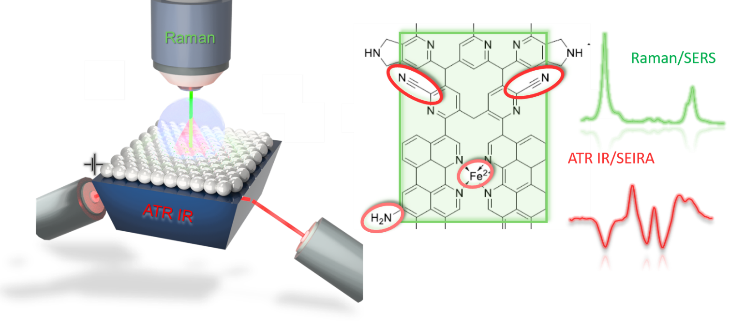Planar Carbon Lattices
RTG-2861-PCL
C5 - Electrochemistry of PCLs probed by operando vibrational spectroscopy
Principal investigator: Prof. Dr. Inez Weidinger, TU Dresden, [webpage]
Doctoral researcher in the 1st cohort: Linda Feuerstein
Doctoral researcher in the 2nd cohort: Open position
Carbon based electrodes are key components in electrochemical energy conversion and storage devices. The large variability of these materials in size, shape, heteroatom dopant concentration and surface functionalization has led to an extensive number of carbon based electrodes optimized for different electrochemical applications. There is consensus that edge sites, defects or heteroatoms within the carbon lattice dominate the chemistry of these systems, however, a clear picture of the interplay between these functional groups and the conjugated carbon lattice is missing. A major problem arises due to the variety of different active sites typically present in bulk carbon materials that permit a clear elucidation of the reaction mechanism. Precision synthesis of atomically defined planar carbon lattices, as proposed in this RTG, circumvent these problems and make these materials highly suitable for analysis via operando spectroscopy. Hereby Raman spectroscopy is well suited to analyze the conjugated carbon backbone whereas IR spectroscopy is sensitive to edge site groups or molecular adsorbates. Vibrational spectroscopy based on the vibrational Stark effect (VSE) allows further determination of local electric fields and can be used to monitor non-covalent binding processes.[1]

Figure: Schematic setup of the operando Raman/SERS and ATR-IR/SEIRA setup, and examples demonstrating the different sensitivities of Raman and IR in PCL systems.
Within this graduate school we will analyze atomically defined PCLs under electrochemical conditions by vibrational spectroelectrochemistry.[2,3] Hereby potential or redox induced changes of the conjugated carbon backbone vibrations will be monitored using electrochemical (EC)-Raman spectroscopy whereas surface adsorption as well as the edge site, heteroatom and defect chemistry will be followed via electrochemical (EC)-ATR-IR spectroscopy. Possible surface enhancement effects of PCLs will be elucidated that would enable us to perform surface enhanced Raman and IR (SERS/SEIRA) spectroscopy of molecules attached to these supports.
Thesis topic 1st cohort: Operando spectroelectrochemistry of printed PCL electrodes
We will firstly investigate printed nitrogen rich carbon electrodes developed in A4 (Kaskel). Central aim is to monitor structural changes of these PCLs during electrochemical storage and transformation. Specifically we want to analyse the PCLs during electroadsorbtion of small molecules and electrocatalytic ammonia generation. Our results will be compared with NMR (Brunner) and spatially resolved Raman data (Maultzsch).
Thesis topic 2nd cohort: Understanding the electrochemical interface of PCL
[2] H. K. Ly, I. M. Weidinger, Chem. Commun. 2021, 57, 2328
[3] H. X. Zhong, M. Ghorbani-Asl, H. K. Ly, J.C. Zhang, J. Ge, M. C. Wang, Z. Q. Liao, D. Makarov, E. Zschech, E. Brunner, I. M. Weidinger, J. Zhang, A. V. Krasheninnikov, S. Kaskel, R. Dong, X. Feng, ”Synergistic electroreduction of carbon dioxide to carbon monoxide on bimetallic layered conjugated metal-organic frameworks”, Nat. Commun. 2020, 11, 1409.
